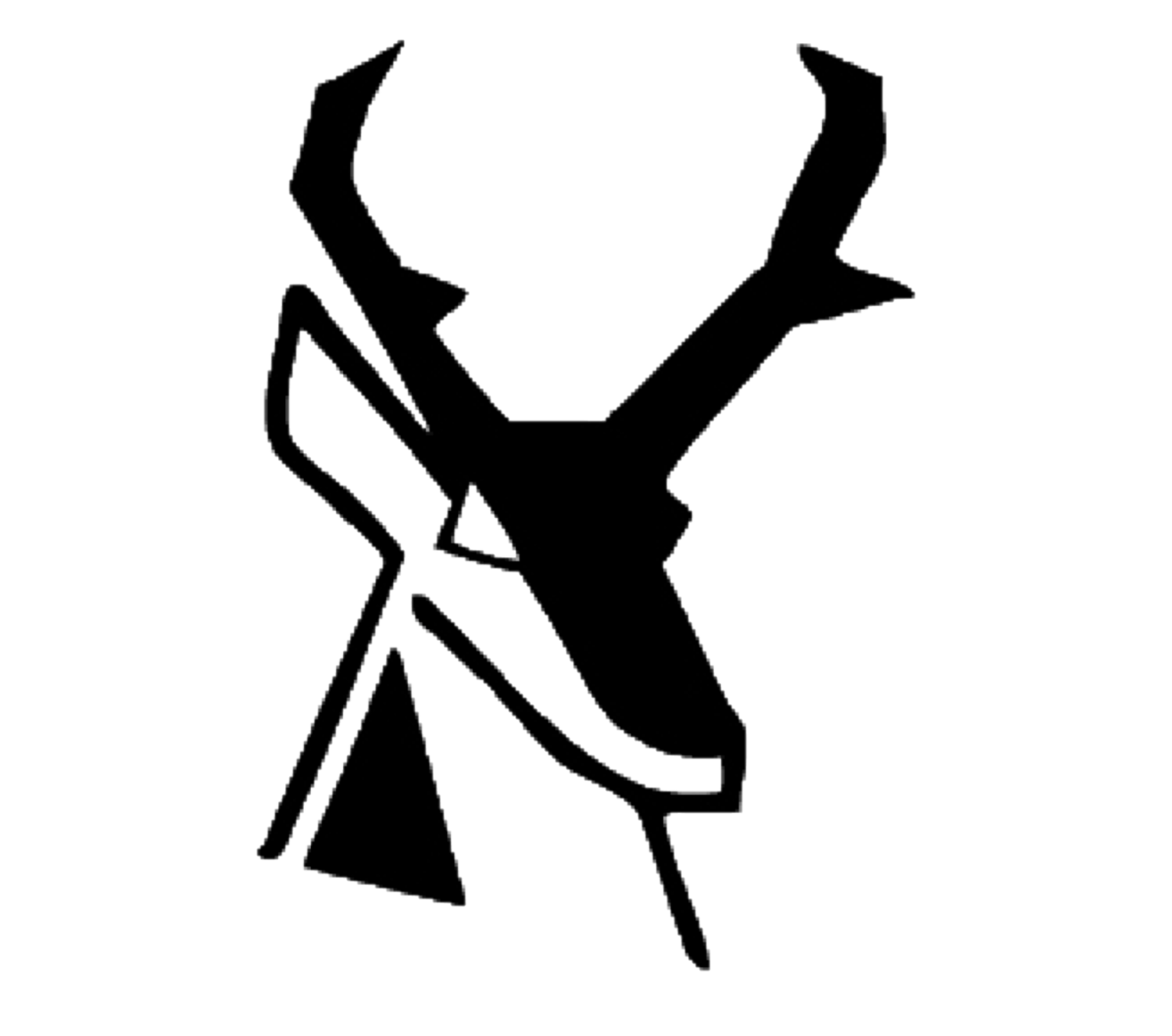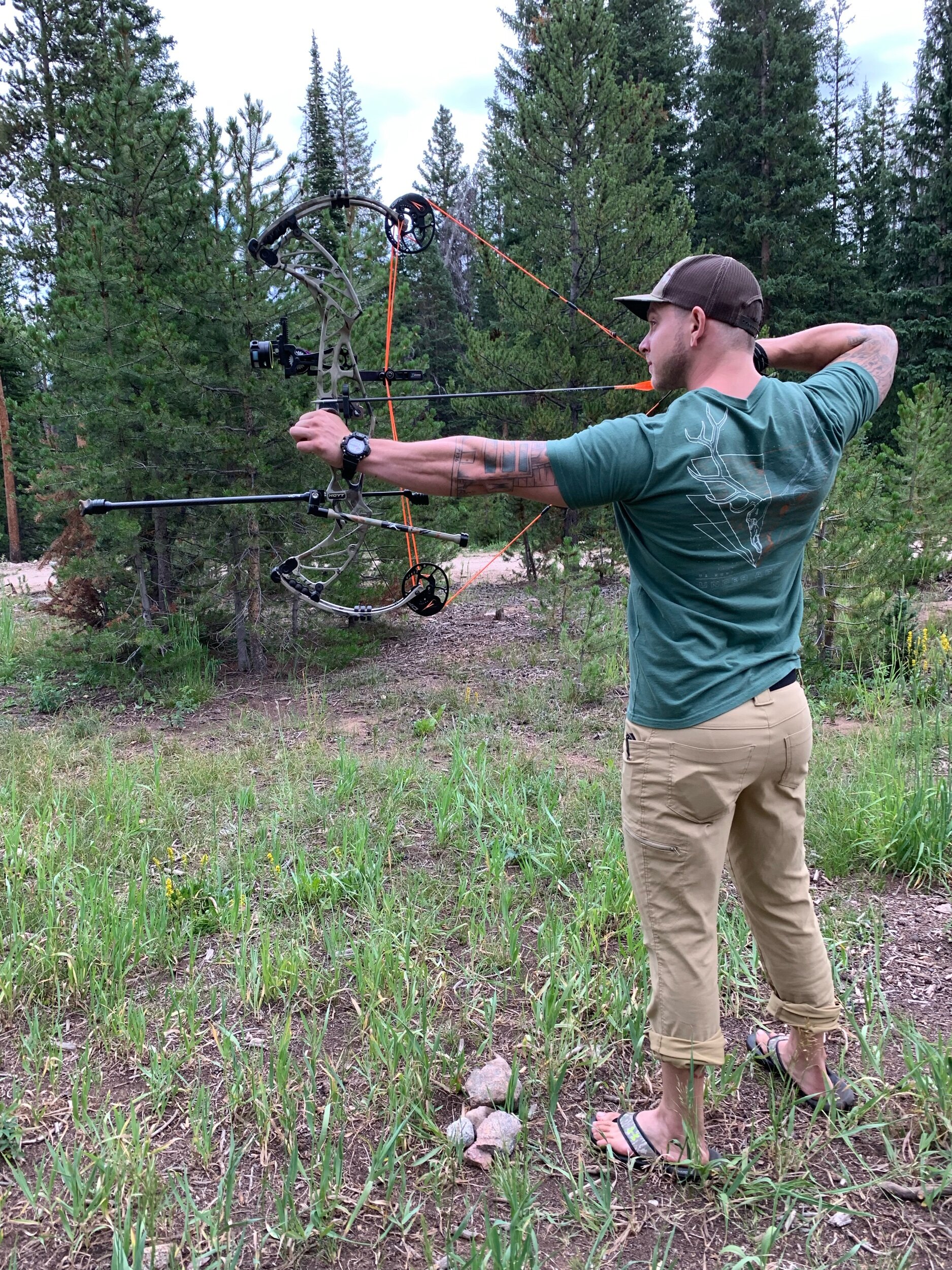Throughout the course of a year our involvement with archery changes with the seasons. From the hot summer months when daylight is long, to the winter months when temperatures plummet, to the golden days of fall when we set out with a tag in our pocket, the number of arrows we shoot changes. It cannot be argued that we want to shoot our best when our hunting season arrives to provide an ethical shot and honor the animals we love and respect so much, but how do we get to that point at the right time? In this article we will be addressing a strategic approach to off-season shooting that will result in your tightest groups occurring on opening day of archery season.
December 1st brings below freezing temperatures, snow, and holiday shopping to the forefront of our schedules. Shooting in these times often proves difficult with such limited daylight and free time, however, there are things we can do to stay acquainted with our bow. It is in the winter months after hunting season has come and gone that I assess my setup from top to bottom, addressing what equipment worked well and what left room for improvement. Once I decipher what will be changing, I begin shopping and researching other options. The shortcomings of your setup are fresh in your mind and the thoughts of failed shots or equipment malfunctions still sting. My archery season runs from mid August in CO for antelope, through late November for NE whitetail. December is a good time for me to hang the bow up and let my mind rest from archery entirely.
Usually by late January I am having severe archery withdrawals and just want to get out and shoot some arrows! My new equipment choices have likely been purchased by now and the eagerness to test them is overwhelming. February is the time to begin focusing on the fundamentals. I start at 20 yards, once a week, shooting a Vegas 3 spot target for score. It allows me a baseline for my shooting abilities and at 20 yards, the demand is not as great. Keeping detailed notes of shots, mental cues, and releases that “feel” good is crucial at this point. We are working towards perfection, and need something to reference.
Late March brings warmer temperatures and the opportunity to get outside in the afternoons to shoot longer distances. At this point I have shot 6-8 Vegas scoring rounds and began seeing improvements. I am fortunate enough to have several excellent 3D courses nearby. My new equipment is now familiar enough to start asking more from, so outside we go! Carrying over the fundamental notes and cues to longer distances, and being as strict with yourself as possible is crucial. This, in my opinion, is when you either make or break your year! If a shot feels wrong, LET DOWN AND DO NOT SHOOT IT! As the distances get longer, self control must become sharper. We are still developing perfect shooting technique as we progress back to top form and do not want to start practicing poor habits. Addressing any equipment conflicts now should also be part of your routine, since adding some distance may expose some shortcomings in your setup.
The first 3D outing of the year
Late April brings springtime and plenty of daylight to shoot in the evenings. At this point I am shooting long distance at or near my max effective distance and pushing past it when possible. For me, long distance means 80 yards or more, and in peak form, my max effective distance is 90-110 yards depending on whether I’m shooting fixed blades or mechanical broadheads. Establish your max effective distance based on your setup and abilities, but don’t be afraid to challenge yourself. Being mindful of the correct fundamentals established in earlier months, it is crucial to not get caught up in dropping long bombs at the expense of proper technique. Anyone can hit the center once or twice at 100 yards, but doing so consistently takes perfect form, flawless shot execution, and a well tuned setup.
June brings summertime and all of the fun 3D events, such as TAC and Mountain Archery Fest. These events take 3D targets, incorporate challenging terrain, and real-world shot scenarios you may encounter while hunting. Steep uphill and downhill shots are a staple out west in the mountains that elk and mule deer call home, and knowing how to adapt your shot process and execution to find the center will vastly increase the likelihood of filling a tag come September! At these 3D events it is very common to encounter shots well past your max effective range. Three years ago at a Total Archery Challenge event in Utah, I recall a 35 degree downhill shot on a bighorn ram target at 73 yards, for those of you who are familiar with cut charts, that’s a whopping 95 yards line of sight. Anytime you are shooting up or downhill, your body’s natural tendency is to shorten itself and compensate with shoulder and arm positioning. Not only will this affect your anchor point, but it will also add bow torque to your front hand. Both of which do not heed well for accuracy. Come to full draw, aiming at something level with your body, then bend at the waist, up or down to the target. One new variable that is introduced in these types of events is the necessity to trust your sight bubble, I’ve mentioned it in previous articles, but in off camber shots, your top limb wants to fall to the downhill side. A good back bar stabilizer setup helps combat this, but will not fully solve the problem in extreme instances. Trusting your bubble level is crucial to not missing left or right on side hill shots, particularly at long distances.
July is a pivotal month in the journey of improving your shooting abilities. At this time, any variables in your setup, such as releases, arrows, stabilizers, or broadheads must be decided upon. For example, all offseason I shoot a hinge style release, but come July, I transition to my thumb trigger release since that’s what I like to hunt with. I will shoot it exclusively, along with the exact setup I intend to hunt with. Tinkering and experimenting with your setup needs to stop now, make adjustments to your sight, rest, and stabilizers to ensure they are all tuned to shoot the arrows you intend to hunt with and LEAVE YOUR BOW ALONE! Confidence in your equipment is paramount to success afield. Practice sessions in July should involve all distances, from close range fundamental intensive focused shooting, to long range accuracy shooting. Broadheads should be incorporated into your practice sessions now as well. A full 45 days of shooting them will reveal any tuning issues in your setup and allow you time to correct them before season. Shooting from awkward positions should also be added in, seated, kneeling, and standing on uneven surfaces are all important to practice since the the animals we will be pursuing do not live in well kept, flat archery ranges.
August, the days are long, the temperatures are hot, and hunting season is just around the corner. Practice sessions should not exceed 50 arrows in this time frame. I personally focus on 2/3 of my max effective range for the few short weeks before the season kicks off. For example, if my max range is 100, I will focus on shooting mainly 70 and in. This keeps confidence high and allows for the good habits we have worked so hard to establish a chance to sink into our subconscious. Long range shooting should not be neglected altogether either. Add in 10-15 arrows at or past your max range to ensure you are still proficient, WITH BROADHEADS! Continue to practice awkward shooting positions and even incorporate some “hunting scenarios” such as nocking an arrow quickly and executing your shot in seven seconds or less. Practice moving your bow at full draw onto the target to emulate following a walking animal. Raising up from a kneeling position, sitting on your feet to upright kneeling is another good exercise. The more prepared for various scenarios you can become, the lower the chances you have of losing sight of your fundamentals in the moment of truth.
Mid to late August means one thing for me, archery antelope hunting! I’ve written an entire article on the subject and it truly is my favorite hunt of the year. With the demand for max effective range being the highest of any hunt, it is important to stay brushed up on your shooting. At least twice a day while hunting I will stop, throw the target out at my max range and shoot 5-10 arrows. I always shoot 2-3 arrows first thing in the morning, and again at last light. The vital area of an antelope is roughly a 10” circle, and at the distances they often present you a shot from, that can get really small. Perfection is not an option, but a requirement!
A 110 yard group I shot while antelope hunting
Sweet September, the golden sea of aspen leaves illuminate the high country, crisp morning air fills the lungs. On my elk and deer hunts I shoot my bow once a day, usually mid day, for 10-20 arrows. Nothing crazy as far as distance goes here, just keeping the form tight and focusing on execution, 40% of max range is adequate.
November brings a transition to whitetail hunting, and new gear, clothing in particular. Throughout October it is important to practice in the clothing you will be wearing, typical whitetail gear is often bulkier than western clothing, so string slap and sleeve contact needs to be addressed. Gloves are another piece of clothing that may affect your anchor point, and the way your release feels in hand. “Cold bore” shooting is an element that I add in for whitetail hunting. Coming outside, and shooting a single arrow 2-3 times a day several hours apart at 30-40 yards is great practice for what you will likely encounter while hunting. There are no warm up shots in hunting so it is important to make the most of of that one single arrow.
The season comes and goes in what seems like a flash, memories made, tags filled, and freezers stocked up for the long year ahead. The journey through the months preceding hunting season should not be wasted, but systematically utilized to improve and adapt your shooting skill. Each month has different benefits and by following the steps outlined in this article, I am confident that you will be the most prepared, confident, and accurate you have ever been. Seize the opportunity to invest in your craft and become a student of the game, after all, hunting season is less than 5 months away!




